The art of reef aquarium keeping has come a long way in a surprisingly short amount of time. These days, big developments in the trade seem to come one right after the other. Technological advancements in particular have enabled us to successfully maintain and even culture species thought impossible to keep just a decade ago.
As we’ve upped our game, we’ve refined our standards. That is, we are less preoccupied with “chasing parameters” and increasingly focusing on what really matters: The health of our “captive ecosystem.” That is, we don’t just want our systems to look like natural coral reefs, but also to function like them. And by what holistic criteria would one judge the health of an entire ecosystem, whether in the wild or in a glass box? By (1) its own capacity to cycle (and recycle) carbon and nutrients as well as (2) the nutritional/immunological wellbeing of all of its inhabitants, from the fishes and corals down to the countless, diverse microorganisms.

This approach–the so-called natural reef aquarium method–is hardly new. It has, however, gained a lot of traction and has become much more sophisticated over the decades. No longer are we content just to toss in some unidentified “good” bacteria and shortly thereafter consider the tank “cycled” and complete. Rather, we understand that (just like on natural reefs) there is an unseen but nevertheless essential biological component to the system that is in perpetual flux.
Specifically, the hobby has seen a surge of interest in microbial food webs. Given the strongly corallicentric direction the marine aquarium industry is heading, recent studies on the aquacultural applications of purple non-sulfur bacteria (PNSB) have been especially exciting.
By the end of this article, you certainly may find yourself wondering how in the hell the marine aquarium industry has failed to widely recognize the value of these microbes; we’re still asking ourselves the same question. East Asian fish and shrimp farmers have relied upon them pretty heavily for over 30 years. They’ve been known right here in the U.S. for some time owing to their usefulness in degrading sewage and industrial wastes. They’ve even been identified as a common coral symbiont. Yet, the most recent notable mention of them in aquarium literature (that we know of) is from a couple cryptic passages in the final volume of the classic trilogy The Reef Aquarium (Delbeek and Sprung, 2005).
We totally get that you might just want to hear a summary of what PNSB (and PNS ProBio™) can do. But seriously, we’re about to make a LOT of claims. BIG claims. In sum (alright, just a wee spoiler), they (1) remove ammonia and nitrite, (2) remove nitrate and phosphate, (3) contain vitamins as well as essential fatty and amino acids, (4) are rich in carotenoids and (5) act as probiotics. It’s admittedly quite a bit to chew on, so let us take a few steps back and firstly describe what PNSB are and describe their place in the natural environment.
What is this stuff?
Even among prokaryotes, purple bacteria are incredibly ancient organisms. They (or very similar ancestors) first appeared on Earth around 3.2 to 3.5 billion years ago. These lifeforms certainly were obligate anaerobes, as there was no appreciable amount of oxygen in the atmosphere at that time; that would come much later, following the emergence of an oxygenic descendent of the purple bacteria, the cyanobacteria (which makes PNSB ancestral to all plants).
But hey, an evolutionary history of a few billion years gives a little wiggle room for some adaptation. At least at a cellular level, they are far more advanced than any animal including us humans. They are indeed widely regarded as the most metabolically versatile organisms ever studied. Compared to the purple sulfur bacteria, the purple non-sulfur bacteria are (with a few exceptions) most adaptable. The extant “sulfurs” (mainly Chromatiaceae) are characteristically anaerobic and autotrophic, whereas their “non-sulfur” counterparts (Rhodospirillaceae and some Bradyrhizobiaceae) are mixotrophic and may subsist in either anaerobic or aerobic environments.
As one might guess from their names, the sulfurs were discovered before the non-sulfurs. This distinction comes from the fact that the former they can use sulfur in the form of sulfide or thiosulfate as an electron donor during photosynthesis. Non-sulfurs, on the other hand, do not rely on sulfur in this manner and in fact can only tolerate it at much lower concentrations.
A little bit everywhere
Probably among the most abundant and widely distributed of the PNSB is Rhodopseudomonas palustris. These rod-shaped, flagellated, Gram-negative rhizobia occur everywhere from marshy soils to the surfaces of plants and algae to the guts of sea anemones. It’s entirely possible that there millions of them on your body right now.
Their ubiquitousness in nature comes from their environmental adaptability, which comes from their ability to bounce between all four major metabolic pathways: chemoautotrophy, chemoheterotrophy, photoautotrophy and heteroautotrophy. It survives under widely ranging pH, temperatures and salinity. It is able to adapt to unfavorable light conditions. That all being said, even this extremely high degree of flexibility doesn’t quarantee a seat in any habitat.
R. palustris, like any other species, must compete for space, food, etc. with other organisms. And let’s just say that the planet has changed a little since it first appeared in the primordial soup. Pliant as it is, it is most at home–and competitive–in anaerobic, moderately illuminated environments with plenty of organic matter around. As such, photoheterotrophy is its favored mode of metabolism.
Reef aquarium microhabitats
R. palustris may invade and successfully colonize numerous types of microhabitats within typical marine aquaria. Given the organism’s odd set of preferences, these hot spots are generally somewhat marginal. For the most part, it swims toward light and away from oxygen (it cannot perform photosynthesis in the presence of oxygen); then, once finding the Goldilocks zone, it moves along this interface in search of food (ideally an organic, rather than inorganic, source of carbon).
These conditions prevail just under the uppermost layer of a sand bed or just below the surfaces of live rock. Purple bacteria and similar anaerobes very much favor calcium carbonate-based substrates due to their high porosity/permeability which allows just the right amount of solute exchange with the water column. Here, light just barely penetrates. A biofilm of aerobes over the exterior creates a perfect barrier to oxygen. If the purple non-sulfurs are so lucky, a film of purple sulfurs and/or green sulfurs might develop beneath them, thereby protecting them from hydrogen sufide that seeps up from sulfur-reducing bacteria (e.g. Desulfovibrio vulgaris) even deeper below. Tiny pockets in the rock, and interstitial space between sand grains, trap detrital particles, ensuring a good food source.
Left undisturbed, these subsurface films become evident as variously colored (dare we say pretty?) bands develop against the tank panels to resemble a winogradsky column. R. palustris may be appear as rusty orange to bright red to burgundy.
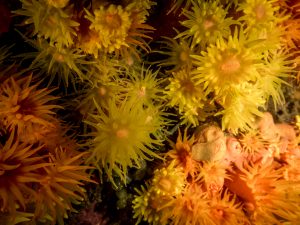
Ceramic biomedia with deep pore structures (such as MarinePure) or filter sponges provide a similar and acceptable microhabitat for R. palustris in particular and for anaerobes in general. These may be placed in any illuminated part of the aquarium system so long as water flows around, but not through, them.
R. palustris is very happy to live within detrital accumulations that commonly develop between/beneath live rock, in dead spots at the bottoms of sumps/refugia, etc. Such a powerful sludge digester that it is used to clear hog wastes, the settled particulates in aquarium systems are but a snack to this species. Its capacity for digesting lignocellulosic compounds is especially impressive; for example, it significantly reduces build-up of cellulose-based rubbish such as that which accumulates beneath the macroalgal bed in a planted refugium. It can also establish itself beneath and devour the sludgy films that envelope porous chemical filter media, thereby improving these products’ performance and increasing service life.
R. palustris is very often found growing in close association with algae and plants of all kinds. In most cases, this is a result of the latters’ secretion of exudates, whether as waste products or as allelopaths, which the bacteria scavenge as a food. In this capacity, R. palustris clears tinted aquarium water by reducing concentrations of dissolved “yellowing compounds.” It moreover protects animals from various inhibitory (especially polyphenolic) substances exuded by plants/algae (e.g. Caulerpa spp.). It is among relatively few organisms that is capable of degrading these aromatic compounds, actually eating them (consuming short-chain organic acids) despite their strong antimicrobial properties.
Perhaps the most unusual (and important) of places that R. palustris can establish itself in a reef aquarium is within the bodies of the animals themselves. Amazingly, this microbe ekes out a living–completely nonpathogenically–within the gut flora of fishes, as a symbiont within corals, etc.
Taking care of business
To return briefly to our original point, the marine aquarium hobby has been around for a sort of long time now. For sure, aquarists have come a long way; some aspire to go much further. It’s great that we’ve pretty much mastered the husbandry of beautiful, naturally plenteous stonies like Acropora; that being said, we still don’t even know where to begin with some beautiful, naturally plenteous softies such as Dendronephthya.
But we’re getting there. As we continue to progress as aquarists, we’ll need better and better tools. And that certainly won’t always mean devising novel gadgetry; we can (as in many past instances) refine this art simply by taking a closer look at what Nature does.
As regards natural tools, Rhodopseudomonas palustris is like a freaking Swiss Army knife. We shall here conclude by elaborating upon the five major contributions R. palustris can make in reef aquarium systems.
- Nitrogen cycling
Nutrient-rich (i.e. polluted) coral reefs are not coral reefs for very long due to one factor–algal growth. Corals (especially reef-building corals) derive most of their fixed nitrogen not from the seawater but rather from an internal source–but we’ll get to that in a just a bit.
Once upon a time, we didn’t think too deeply about aquarium microbiology beyond getting our systems “cycled” (i.e. populated with large colonies of obligately aerobic nitrifying bacteria), even if we were left with lots of nitrate; no ammonia/nitrite=no problem. Then, low-nutrient (e.g. low-nitrate) systems became another way to go. Now, low-nutrient systems are the way to go. This isn’t as much a new trend as it is a new capability; thanks to improved technology/husbandry practices, oligotrophic (very nutrient-poor) conditions are possible to maintain in aquaria.
R. palustris is most valuable in the aquarium microbial community for its ability to remove ammonia and nitrite from anoxic areas of the system. This is a photoassimilative process, meaning that they take up nitrogenous compounds into their bodies rather than converting them into nitrate (i.e. algae fertilizer). R. palustris assimilates both ammonia and ammonium. It is even positively chemotaxic to nitrite (e.g. swims toward it). Though it is a heterotroph, it will not compete with nitrifiers in your “biofilter” as it strongly prefers anaerobic environments. Indeed, its presence seems to impact the whole microbial community in a manner that promotes stability and improves general water quality.
- Nitrate/phosphate removal
A good many aquarists struggle to keep nitrate and phosphate levels in check. That is why so many would benefit from the use of R. palustris. This species safely removes nitrate in both aerobic and anaerobic conditions. Yes, same for phosphate. In so doing, it competes effectively with nuisance algae and prolongs the life of certain kinds of chemical filter media. It is faster-acting and easier to culture than true denitrifying bacteria (e.g. Thiobacillus).
- Nutrition
Here’s an area where R. palustris really excels. One study found it to be quite rich in protein–72-74%! On top of that, it’s full of the essential fatty acids stearic and oleic acid. It also contains a lot of amino acids such as aspartate. All this wholesomeness is readily digestible since the organism (being a bacterium and not an alga) has no tough, cellulose-based cell wall.
It gets even better. Marine ecologists have always wondered how corals (especially stony corals) could be so productive in such oligotrophic waters. They only learned why fairly recently: Nitrogen-fixing bacteria.
The most astounding thing about R. palustris is that it is a pretty damn good diazotroph (i.e. nitrogen fixer). Just like the rhizobial bacteria that live within the root nodules of leguminous plants (and to which it is closely related), it can create ammonia from nitrogen gas.
Wait… it makes ammonia? Isn’t that bad? Not in the least! It’s not just “not bad” but pretty awesome. This is because (1) the process is energetically expensive and carried out only under acute nitrogen starvation and (2) it does not occur within the water column but rather the inside of corals where nutrients are immediately taken up and utilized by the hungry zooxanthellae. As in natural, nutrient-poor reef environments, this arrangement allows for the high productivity of endosymbiotic algae (i.e. zooxanthellae) while contributing nothing to the growth of benthic (e.g. film and turf) algae.
An integral part of the so-called coral holobiont, these bacteria consume organic wastes secreted by its host while supplying a continuous source of fixed nitrogen to the zooxanthellae. R. palustris is one of several diazotrophs commonly observed living in the mucus, tissues and skeleton of corals.
- Carotenoid supplementation
For those filter-feeders that sift it from the water column (corals, sponges, clams, etc.), and the detritivores that consume it along with the detritus (copepods, amphipods, isopods, etc.), and also for those fish that eat pods (mandains, seahorses, gobies, etc.), R. palustris confers additional benefits in the form of carotenoid pigments.
Pigments such as astaxanthin are literally worth their weight in gold, and one of the big reasons for this is that they are fantastic colorants. Consumed in a manner that leaves intact their bioavailablity, they can really brighten an animal up (especially reds and oranges). But that’s hardly all. The pigments in R. palustris have been found to be powerful antioxidants with impressive free radical scavenging capability. Some of these pigments are also formidable antimicrobials, capable of killing both gram-positive and gram-negative enemy microbes.
- Probiotic protection
This microbe isn’t joking around when it comes to protecting its turf. In addition to its carotenoids, it synthesizes actual, potent antibiotics. This includes streptomycin, to which even antibiotic-resistant strains of Vibrio are sensitive. This has huge implications for aquarium keeping and aquaculture, as Vibrio is believed to be responsible for numerous deadly afflictions such as rapid tissue necrosis (RTN) in corals, acute hepatopancreatic necrosis disease (AHPND) in shrimp, flesh erosion disease in seahorses, and so on. Because it is known to remain viable in the animal gut, it can be added to fish or coral feed for direct probiotic support.
Using R. palustris in the reef tank
With the availability of PNS ProBio™, a carotenoid-rich live Rhodopseudomonas palustris culture, there has never been a better time to take your reef system in a new, more natural direction. This quality product is used to cycle, establish and mature new systems; it can alternately be used to purify and revitalize old systems. It is just as effective in freshwater as it is in marine aquaria!
Here’s a rundown of the major benefits of this ancient super-microbe:
- Proven to support rapid and complete nitrogen cycling from ammonia through nitrate.
- Proven to aggressively take up phosphate.
- Proven to provide excellent and highly digestible nutrition for diverse aquatic species, being rich in protein, amino acids, fatty acids and B vitamins.
- Proven to promote coral growth as a symbiotic diazotroph.
- Loaded with carotenoid pigments that are proven to provide color, antioxidant activity and disease prevention.
- Armed with antibiotics with proven effectiveness against highly virulent pathogens such as Vibrio.
Of course, there are no purple non-sulfur bacteria that can raise a poorly maintained aquarium from the grave. It competes with, but cannot immediately eradicate, unwanted algae. It helps to prevent disease but is not a medication. It might not be capable of keeping nitrate and phosphate concentrations near zero if the tank is chronically overstocked and overfed. And, neither this nor anything will ever eliminate the need to perform regular water changes.
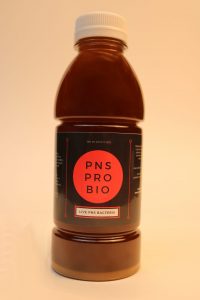
However, especially with regular use, you will see a healthier, cleaner, more stable captive ecosystem–just as hard scientific evidence has demonstrated possible time and again. PNSB aren’t just found on coral reefs, they’re in the corals themselves! If you want your reef tank to function more like the real thing–well, now you know what to do. With Rhodopseudomonas palustris as part of your aquarium’s microbial community, you’ve got a few billion years of evolution at your back.

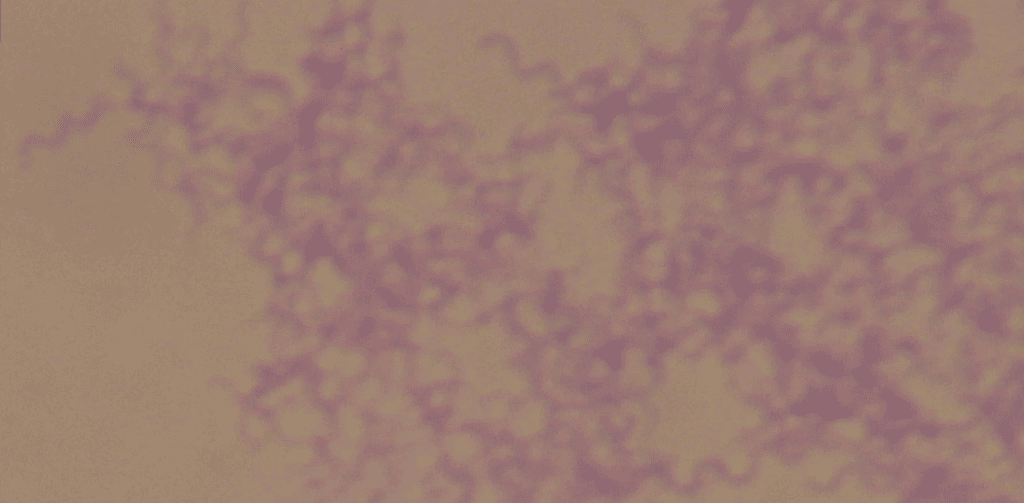

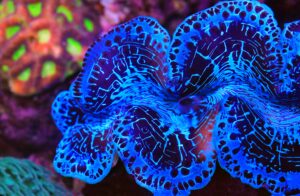
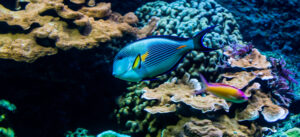

Sean Beaver says
I love these articles. Super informative.
Donna L Holder says
i need all the info on this subject
N L says
I had no idea this existed.
Seriously and informative and thought provoking article.
Thank you.
Chad Smith says
Thanks for the article!
Christina Lang says
agreed
Mario says
Always informative
Tanner ilkow says
Yo this is dope
tarheelborn1982 says
Merry Christmas
Nghia Le says
Merry christmas
bu.nghia417 says
Happy new year
bu.nghia417 says
Happy holiday
amos says
this is nice info
Chris Whalen says
Very nice article!
Austin beach says
Awesome entry reef tank for life
Sean Beaver says
I loved this article. Definitely going to buy a bottle of two of the Probio.
Za Fish Guy says
Hmmm I think aquariums microbiomes are the next step.
Asad Khan says
Great write up. Thanks for all the info
Kyle says
Great article
Steven Semeniuk says
Another great read from @algaebarn !!!!
Ricardo Munoz says
Great info as always
ocjake06 says
Happy holidays
Garrett says
Wonderful information!
ocjake06 says
Happy holidays
Christopher Burns says
Tons of info
Nicholas Hagstrom says
Really good read!
Jerry Pearson says
Definately will be going with the Biomedia.
Christopher Gilley says
Like
Ashley Zabel says
Love your blog! ??❤️❤️
blas artiles says
Happy Holidays
Ben says
Happy holidays
Weboh says
Happy Holidays!
Jennifer Lye says
Interesting!
Jayda Patterson says
Having a great beneficial bacteria population is crucial to maintaining stable nitrate levels!
Alex von Hochtritt says
Yep – I’ve been out of the hobby too long. This is ALL NEW to me, so this is a great read!
tragikzmd says
Can’t wait to try the PNS Probio!
Kristen Maves says
Wow! Just wow! ??❤️
michael p says
Learn something new every day — good read
DANIEL SCHLAGMAN says
Interesting@
Gerot Melo says
Happy holidays!
Luis Cosme says
Thanks for the info !!!!
Alexa says
Happy holidays!
Chris Buswell says
Very interested in this product…is it similar in action to Vibrant? Is there a reason the two could not be used in tandem?
Kenneth Wingerter says
Different people seem to get very different results with Vibrant, and the manufacturer doesn’t state what species of microbes it contains, so we unfortunately cannot answer those excellent questions with any certainty! We might leave you with this, however… We’ve seen very directly (controlled experiments in jars) where R. palustris outcompetes/eliminates microalgae, yet it does not appear to harm macroalgae or impede its growth. We suspect that the very different interactions of this bacterium with microalgae and macroalgae has to do with its activity as a diazotroph (see article!).
Sean Simkins says
Would love to try that
Dalbir Singh says
Good info
Josh Stevens says
Great info Happy Holidays
Maria says
Trying to win this contest!!
Jarred Tachiera says
Vibrant is key
Adam Lyndaker says
Interesting read
Paul Cote says
Thank you for the great info
Michael Hawco says
Algae
Rudy A Garcia says
A lot to read and a lot to learn. But as they say, knowledge is power…or in this case a way to help stabilize your reef and encourage growth and longevity to your corals and other livestock. So definitely adding this to my shopping list from now on.
Joey Gatlin says
A lot of great information.
ANTHONY CANDELORA says
Do-All Aquarium Bacteria
Paul Kachirsky says
Jam packed with info.
Dallas Tippie says
I need to get this from AlgaeBarn!
Courtney Garbee says
Informative
Michael says
Lots of information, good read.
Gary Passwaters says
Might have to give this a try
Derek Covatch says
Great info to do a trial tank.
Felix Roeschert says
Is this like vibrant? I‘ve never even seen it before!
Kenneth Wingerter says
Hi, Felix! See the response to Chris Buswell’s question above!
Leo Minegishi says
This is a lot of great info on keeping your tank healthy in a more simple manner!
Matt Traylor says
Learn something new every day. Would love to try this product and see the difference it makes in my reef!
Jacob T Wright says
wow so much information!
Brian Badge says
I am going to have to read this a few times to unpack it all
Blade says
Good stuff
Cole says
Might have to try that stuff on my next order
connorw88 says
That was a truck load of information. I’m going to have to read that one a couple times and refer back often. Thanks.
Jarron says
Great
Jarron says
Good to know
Jarron says
Good to know
Julianne Morgan says
The world would be a much dirtier place without the micro cleanup crews ? Good read
Josha Mitchell says
Great stuff!!
David Heath says
I would love this!
Kyle hagger says
Good suff
Chris says
Great read.
Zaid Payan says
Happy holidays
ekersd says
Kudos to Algae Barn for being upfront and educational. Just added this to my shopping cart. Probably an ingredient in a few of the “trade secret” additives that are being marketed.
ceg0002 says
Interesting read
David DeMarco says
Sounds like a great product
steveszczepanowski says
Great read
Catherine says
Ordered!!!
maxbears34 says
Probably gonna pick up a bottle of PNS ProBio with my next order!
Cynthia Sedlacek says
The Do-All Aquarium Bacteria
Joe car says
Thank you for the info, great read!
Bryan Tisdale says
Is this the new Gatorade flavor?
Kenneth Wingerter says
😀
Sheila Beach says
Saved this to read again
Krishna Ramaraju says
Very informative, thanks!
Keith McMillan says
Great read!
Hasan Sarsour says
Good read.
Chris Tezak says
Thank you!
Brad ODonnell says
Great
Allen says
Awesome read. This site has so much great information
Jose Pacheco says
Nice info, I did know about the pns
Dalbir Singh says
Very informative
John Moyles says
Nice
Rena Walter says
This sounds interesting.
sarah edwards says
awesome
Ryan Smith says
Love it
Drew Rollman says
I’ve always with diversifying life in my tanks when I start them up. I ask other local reefers for a small capful of sand from their systems. Seemed to always have the best cycles that way.
jose lozano says
Merry Christmas
Richard Varone says
Interesting product, can’t wait to try it out!
Shaun Small says
WOW that was a lot to take in
Donald Carney says
Awesome information
Kurtis says
Good info
Tray says
Good information for new reefers!!!
Jennifer says
Always good too learn more too make your tank thrive!
Joshua Wheat says
Nice
Frank Fodera says
interesting. Love your products.
Matthew Semonish says
!
Neil says
Nice work
Neil says
Nice work
John says
Cool
caldea says
Great information
Eric J Homan says
Will be referencing this article in the future, thanks.
dcallahan56789 says
This is super fascinating and could be a real advance in the reefing game. Im certainly going to order a bottle on my next Algae Barn order!!.
Is there any worry when starting to use this product?? Especially in established reef tanks?
Kenneth Wingerter says
No worries at all! We’ve administered 4x overdoses (experimentally) with no ill effect. This microbe is totally nonpathogenic and occurs on reefs (even inside corals) naturally. While it can really jump-start a new system, it works well in established systems, particularly for safely degrading deep accumulations of detritus.
Ricky Dube says
A good read!!
Ansu Abraham says
Interesting topic.
Ashlee Smith says
Thank you for the informative read!
Casey Whittington says
That stuff looks amazing, Im going to have to pickup a bottle..
patburns99 says
Interesting. May need to try it.
Steve says
So important for stability
Jordan Sims says
Great read.
Omar Pardo says
So much info I’ll have to come back and read again!
Ravi says
The do-all bacteria
ramon castellanos says
this was a great read!
dakottah7 says
Very interesting!
Meghan Mulkerin says
Amazing research
Robert Donlon says
Happy Holidays!
Finnian Sheehan says
Merry Christmas!
conner stumpf says
the importance of bacteria has really come into the spotlight over the last few years
Jorge says
Very informative
Robert Paniagua says
Just wow that’s awesome
Courtney Hoard says
It’s the Gatorade for marine tanks!
Jean Pattison says
I think I am going to try this.
And……………….thank you Algae Barn for the opportunity to enter the contest.
Felix says
Awesome!
Michael Quinones says
Damn you Algaebarn! Someone (?♂️) is about to spend some serious cash here…….
tmanrogers95 says
Nice
Neal says
that’s a lot of info! but very educating
Tony says
I’ll think about it. I think varieties of things in the tank are best.
Michelle says
Love the blog thank u
Brian Dolphins says
God Bless.
Jesus says
Goy to give this a shot.
Ashley M says
Love this
Mike Muzzone says
biodiversity
brandon.costello says
Merry Christmas!
Echo Rodetsky says
Interesting read.
Alejandro Rodriguez says
Bacteria has been a godsend to the hobby.
Edward Raposo says
Loving this post!
devon maynard says
Wonderful Information
Chelsea Carothers says
?
Brandon Carothers says
Very informative
Cody W Pressnell says
Great read!
Cory Lakers says
Wow
Cory Lakers says
Bacteria rocks
Madeline says
Interesting information!
Julie Bauknecht says
I’m still scratching my head wondering why a Reefer tank enthusiasts it never occurred to anyone before now?
Elcain Chase says
Bacteria is so cool!!!
John Jones says
Great work on this, worth the read 1000%
Bo Heath Kinsland says
Cool cool
Chris Roberts says
good read
Cole Froerer says
I’ve got a lot to learn!
Cassia Carvalho says
My friend drank some once, he’s alright
Doffrey says
Wow, I’ll definetly check this out some, more this is incredible
Caden says
Great info thanks
Ben Cameron says
Informative
Jaime Quintanilla says
I think carbon dosing needs more attention in our hobby
Anthony Sansone says
Great article!
Mahamudul Hasan says
Merry Christmas!
Mahamudul Hasan says
learned a new thing
Patrick Stephens says
Great read!!
Carrie Charles says
Merry Christmas to all. BTW you guys have some of the best info ever!!!
Steve S says
tyvm!
Brent Grandidier says
Great article!
Greg says
So much info for beginners to advanced hobbyists
Tristan Smith says
Interesting read.
Sam says
Never knew. Thanks for the informative article.
doug perry says
Happy holidays
OG says
Happy Holidays!
AVeryFishyFish says
I’ve had this happen
AVeryFishyFish says
I’ve had this happen
Eivind Parnas Schage says
Happy holidays
aaron says
Wow good info algaebarn thank you
Erick Blais says
Great info as always
Tian Sorg says
Very informative!! Thanks!!
Katherine Borbon says
Merry Christmas and Happy New Year
Justin Bishop says
awesome
James walker says
Great info here
Nadia Mohandessi says
Good info!
Barry Sylvia says
Good read and very informative!
Jeremy Lombardo says
Happy holidays
Joshua Deaver says
Nice!
Kyle kegley says
The do all aquarium bacteria
Cammey lol says
very interesting 🙂
Cammey lol says
very interesting 🙂
Cammey lol says
very interesting
twhitcamp says
Happy New Year
twhitcamp says
Happy New Year
Krystal Whittington says
Very nice write-up. I learn quite a bit
kellymhansen says
Good bacteria is a must have
Daniel says
Now I know what type of bacteria I need and don’t need
Bethany Souza says
Aww…the journey of good to bad to do it all bacteria’s in your tank
Matt Blefeld says
Very interesting. Just might have to pick myself up some
bad72nova says
Very interesting read. Sounds like a vibrant type product. Wonder what the downsides are.
Kenneth Wingerter says
Hi, BAD72NOVA!
No downsides at all! See responses to Chis Buswell’s and DCALLAHAN56789’s comments above.
Jonah Schwarz says
Crabby patty
Rachael McConnell says
Happy Holidays!
Michael says
Thank you for what you do.
Michael says
What’s next for 2020?
Rachael McConnell says
Happy holidays
Max Humbach says
Very informative!
Melanie Tavarez says
Gotta Love good bacteria
liesle_memmott says
Good read and details. Thank you
Jen says
Nice read. Could use some for my tanks
Alice Lewellen says
So cool!
Nicholas nevins says
Great read and insite
Marla says
Definitely need to read more into this
t.joudi says
How can we be sure this bacteria stays in our tanks if we use UV filtration?
Tom says
Interesting. Cheers to biodiversity!
pinckark11 says
Thank you for the great info!
samuelwalker1996 says
Amazing information, happy holidays!
Mike Mijarez says
Happy holidays!
Dustin says
I’m really loving these blog posts!!
Terry Alcott says
Awesome read!
bu.nghia417 says
Happy holiday
Adam Gilbert says
Interesting!
Lance says
Thank you
John Louis says
I dose bacteria every other day, my tank has never looked better and my nutrients are always in check and stable, this is what we should be looking more into rather then spending thousands of dollars on equipment.
Caleigh says
Happy Holidays!
Karie Mabus says
I learned something new today. Thank you!
Michael Gionta says
very interesting
jennifershea says
Awesome read. Thank you for the info
paul pomeroy says
Happy Holidays
Mike says
I had no idea or knowledge of this type of bacteria. Very interesting backing statements in it too.
Kim Eberhart says
Wow, a lot of information here. I need to re read just to understand it all!
leyerin31 says
Good stuff to know.
victoria casella says
Great read!
kris_jns123 says
Good info
Lamar Seaman says
Quality content
Luis Cosme says
great info for the new tank !!!!
Kale says
Interesting
Reuben gunderson says
Happy holidays
Eric Rosnick says
Great information, just getting started in saltwater
Alisa Tejeda says
having an aquarium not only fills my heart with joy, but it is also so educational. Happy holidays
Alisa Tejeda says
its so fun learning about different type of bacteria
Tina R Rice says
This is something new i learned to6
Mands says
I ❤️ Bacteria!
Tami Rose says
Want to try this now
Michael says
Loved the blog!!
Peyton Howington says
Great info!
Eliane says
Very interesting
chereecarter says
Holy crap!!! Excellent article, best one so far!! I have already book marked this product and WILL be buying for sure!! WOW.
Kenneth Wingerter says
🙂
tiffanymeyer1987 says
Great information
Eric Dickey says
Interesting
Martin says
Cool
Mariana Conde says
Happy holidays
Lizeth Lara says
Good luck everyone
Edgar Alvarez says
I’ve heard of this only once before.
Victoria Brewer says
Wow very interesting might have to add some to my seahorse tank
Kenneth Wingerter says
You should! We suggest adding it to seahorse food, whether live foods such as brine shrimp (via gut loading) or frozen foods (after thawing); it remains viable in the fish’s stomach/intestines as a probiotic, and produces antibiotics such as streptomycin and kanamycin (which are effective at controlling Vibrio-related illnesses such as seahorse flesh erosion disease and snout rot).
Devin says
Nice to learn something new
Felix says
Nice!
chris peters says
Is there an amount of different types of bacteria that would be too many too add to a tank? Or more is better? I’ve been told not to add more than one on a single day, how far apart would recommend I add them?
Kenneth Wingerter says
Hi, Chris.
R. palustris can be added at any time (with or without other bacteria), whether seeding dry rock in a new system or removing detritus in an established system. In fact, because they prefer anaerobic areas, they won’t (unlike many aerobic heterotrophs) interfere with aerobic nitrifying bacteria (Nitrosomonas, Nitrobacter, etc.) during or following the cycling period (this is something we understood intuitively, but also confirmed with a highly regarded expert in bacterial nitrification). If anything, these “pioneer” bacteria actually promote the growth and diversity of other beneficial microbes (one reason they’re so often used in agriculture)! In short, these bacteria are a win-win.
Waiz says
very Informative
Waiz says
nice article
ainarm says
Something else to add to the shopping list.
neill0027 says
Good info
Paul Marvin says
Very interesting!
Elizabeth Mack says
Thank you!
Nicole says
Great info!
Craig Wood says
Very informative
Zack Ford says
Awesome
stylewriter874 says
Really enjoyed this article
Randall Clawson says
Going to give it a try.
Melanie says
Awesome essential information!
hwarrenfeltz says
Happy holidays!!
Gracie Scott says
WOW good info!!!!!!
Jason Blair says
I wasn’t aware of some these micro goodies.
?
shackelford.jim says
Interesting information.
Dan Melton says
Adding to cart now!
Ana Anderson says
happy holidays
Kaity says
Great detail and information on everything you need to know about what actually should be in your tank and for all your fish!! Happy 2020 everyone!!
Anthony says
Germs are good ?
Darrell Wheelis says
Good info
megan_kim says
Interesting!!
James Fields says
Cool
Jesse Richardson says
Happy Holidays!
ddogusmc says
is it possible to overdose this?
Kenneth Wingerter says
Intuitively, we’ve always believed that it cannot be overdosed, because it is completely nontoxic and nonpathogenic. Even so, we tested this product extensively for two years on both freshwater and marine systems and were never able to overdose, even when we attempted to do so. For example, we repeatedly applied 4x overdoses on zoanthids as well as LPS, SPS and soft corals, and they only seemed to love it.
Joseph Bernier says
Hello
Charles Brooks says
Very interesting read.
Jonathan Dahl says
This article has convinced me to get some super porous media and a bottle of PNS pro bio for my reef. Thanks for the great read!
Kenneth Wingerter says
Hi Jonathan,
We believe you’re totally onto something there. This bacteria does so much that we haven’t gotten around to it yet, but we definitely intend to elaborate a bit on possible special applications. And one of those suggested uses for sure will be soaking it in a sponge or ceramic medium like MarinePure and then simply dropping it in the sump or refugium–instant anaerobic bacterial nitrate control!
pinckark11 says
This article has some fantastic info that is applicable to my system directly. I love learning new things to improve the habitat for my reef animals.
Paul Brown says
I love these articles
bri.dahlberg says
Great info
kathy pease says
This sounds like a wonderful products
josephine bylsma says
awesome information!
chica says
steel-eating bugs
abby baker says
love this
Sharp says
Interesting!
Sharalyn Anderson says
Have a great New Year!
Sharp says
Neat info!
Chad says
Good bacteria
David Woolf says
Interesting read. Happy holidays!
kameronkh3 says
I never realized how many things factor into building an ecosystem until I started up my saltwater tank. It’s like learning creation all over again from actual beings all the way down to the tiniest bacteria! It’s crazy how far we’ve advanced in our aquaculture research and how far we’ll go to create our own little ocean right in the comfort of our home(:
Julian Pillans says
Getting into this hobby makes you want to change majors!
Julian Pillans says
Awesome read!
Julian Pillans says
Happy holidays!
oscar101802 says
Great information
Christopher Gomez says
Wow great info!
Amber Kolb says
Thank you for all of the information! I didn’t know much about R. palustris until today.
Christopher Gomez says
Nice article
Christopher Gomez says
Great article
art says
cool
Judi A Mitzel says
Definitely interested in trying this soon
jessemichaelelliott says
<3
Hunter says
Type here……
wen says
No
robert says
Cool!!
Carol Lanette Gatlin says
Happy Holidays
Andika Sitanaya says
how about with Rhodobacter capsulatus ?
i cant found your products in my country, i found local brand contain this bacteria but it contain also with Rhodobacter capsulatus